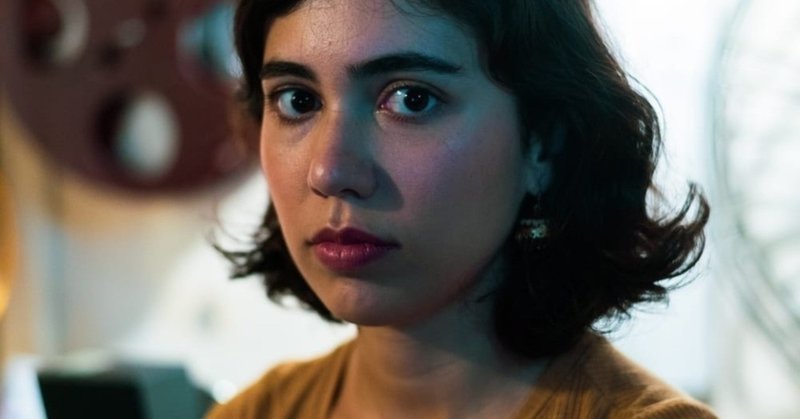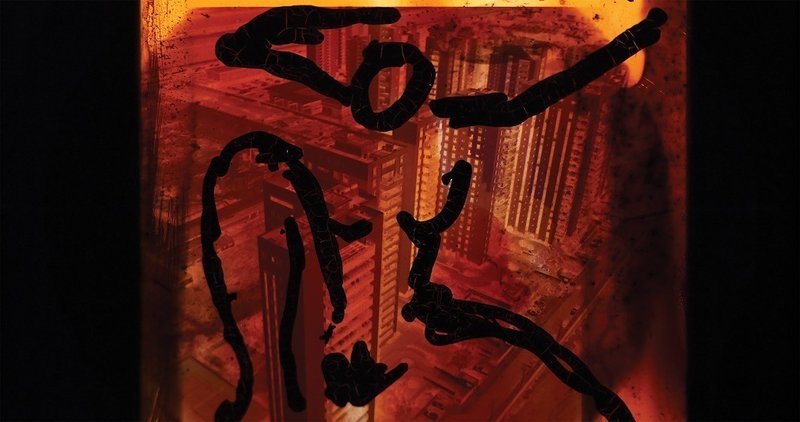
My Body, My Words: Interview with Camila Kater
Camila Kater is a director, animator and production designer. After getting a Bachelor of Media Studies with an undergraduate in Film and TV Production at the Anglia Ruskin University (Cambridge, UK), she served in stop-motion productions as animator, art director and puppetmaker for shorts and feature films, such as The Apple Trial (2013), Flerte (2015), Indescribable (2019), Bob Cuspe, We Do Not Like People (in production). Her short film Carne has been selected for the development of laboratory Bridging The Gap Animation Lab MiradasDoc (Spain).
///////////////////////////////////////
Tettyo Saito (TS): At first, why did you want to become a film director? And how did you become?
Camila Kater (CK): I've always enjoyed creating stories and craft making. Since I was a child, I played along with my sister and we used to brainstorm loads of stories. Besides I never quit drawing. When I was 15, I started making some comedy videos with some of my friends and my sister and it was just a matter of time for me to choose my graduation course. I have a bachelor degree in Media Studies at University of Campinas and a sandwich degree in Film and Television Production at Anglia Ruskin University (UK). When I was in the University, I started to take animation workshops in São Paulo and I was amazed with it. Right after the first workshop, I started to write a script for animation and I invited some student friends to collaborate on it. From there came Flirt, the fist animation I made, I was also the animator and puppet maker. After that came Unspeakable, a stop motion film which is still in production, directed by Samuel Mariani, co written by me, in which I was also production designer and puppet maker.
TS: When you started to be interested in movie, what movies did you watch? And what kind of movies could you watch in Brazil at that time?
CK: Since I was a child I was very interested in tv shows. I loved to watch a popular Brazilian show called Castelo Rá Tim Bum. But the Brazilian audiovisual shows for kids weren’t many, so I watched a lot of Nickelodeon’s cartoons, Hey Arnold was my favourite. I remember to watch Menino Maluquinho at the theatre and the Xuxa’s films on tv, a famous Brazilian tv show presented by Xuxa Meneghel.
TS: What is the starting point of "Carne"? Your experience, other people's experience or some other fact?
CK: The starting point of Carne came from my own experience with my body and the women from my family. When I was 6, for example I already was very concerned about my body forms. During puberty, when my body started to change and I started to realize that men started to notice, so I tried to hide my body with bigger clothes, to avoid their look and harassment. Also, from stories that my mother and aunt used to share and still share with me about their own experiences. During the making of the film, I was diagnosed with endomentrioses, a condition that can make my body develop pre menopause symptons beforehand, so a lot was going on on my mind and body even when making the animation.
TS: Your film is illuminated by 5 women's colorful voice about their body. How did you find these women and why did you choose them for this film?
CK: First of all I created a structure for the film, I already knew I wanted to ironically associate women bodies accordingly to the stages of life with the meat cooking stages. Besides, I created profiles along with themes I want to approach for each stage and chapter. For example, for the first chapter, I wish to have a woman protagonist telling a story about being fat during the childhood. With my producer, Lívia Perez, and the scriptwriter who co wrote the film with me, Ana Júlia Carvalheiro, we did a lot of research to find the protagonists who could represent each chapter. We released a form on social media, we got suggestions from woman who supported the project and two of the characters are famous in Brazil. Helena Ignez is a actress and director and Raquel Virgínia is a singer and compositor of a band called As Bahias e a Cozinha Mineira.
TS: In "Carne", you elicit very attractive and beautiful words and voice from 5 women. Sometimes intimate, sometimes heartbreaking, but always wonderful. What is the most important thing when you communicate with them for this film?
CK: I'm very grateful to those great women who shared their stories with us. I think every woman have some story to tell about their body, the thing is that there is a lot of diversity in their realities and in their identities and that make their stories stronger. I can relate to some of the stories as a white CIS women, but of course not all of them, and one of my goals with the film was to show this diversity and how we as women are all affected for just being woman, but in many diffent ways.
TS: One of the most extraordinary elements is its animation. Its animation is alluringly colorful with sometimes clay, sometimes watercolor and sometimes photographs etc. How did you choose the styles of animation for 5 sections?
CK: Originally I've decided to make all the film in black and white 2D digital animation. But when I interviews the first protagonist, Rachel Patricio, everything changed. I saw a great potencial to explore new materials with her testimony, because her story was about her relation with food and how her nutritionist mother controlled it, so I thought, maybe I can use real food, maybe all her narrative can be represented inside a pottery plate. And the challenge now was to do the same with the next characters to come. So the intention was that the technique matched the testimony. The second character’s story is about her puberty and periods, so a fluid animation with watercolour representing blood was the one I’ve chosen.
TS: In Japan (or perhaps also in Brazil), there is a lot of body-shaming advertisement or TV program which makes women despise their own body. In that difficult world, how do we love their own body?
CK: Unfortunately it happens worldwide. Media convince us that we don’t belong to a beauty standard, which no one does. And it’s very cruel and anguishing to women, because we are their main target. And it affect us in different ways, depending on our body chape, skin colour, age, etc.
So most of us has been raised in a society that rejects diversity and we built our minds on that and we automatically reject what is not a “standard” in our body. And as society sees us women as a body before seing us as human beings, it can destroys self esteem.
Even being self conscious of that, it’s very hard to love our bodies. It’s a first step. I think sharing experiences with other woman can help a lot, because you see every one of us has some insecurity regarding our appearance and that we don’t have to be insecure. Our bodies are unique and naturally beautiful as they are. We should reject media beauty standards, because no one feels connected with it.
TS: How is the current situation of Brazilian cinema? From outside, it seems good. Modern maestros like Kleber Mendoca Filho and Karim Aïnouz make masterpieces and new talents appears at very famous festival like, for example, Maya Da-Rin at Locarno, Alfonso Uchoa and Joao Dumans at Rotterdam and you at Toronto. But from inside, how do you see the situation?
CK: I think Brazilian Cinema is facing a creative boom. From the past governments, there were some great improvements, but now, with this new president we are facing one of the most difficult times in our Cinema. He has this very narrow mind, so he tried to shut down our National Film Agency Ancine, but afterwards he couldn’t, so he moved it from Rio de Janeiro to Brasília.
Some of the most important financial supports were shutdown and the small and medium film companies are at great risk. Me, for example, I got support from Ancine to go to Locarno and Toronto (TIFF) but when I was in Toronto I received an email telling me that this was my last support. So from now on I have to pay for my flight tickets even if I’m representing my country at this international festivals.
TS: When movie lovers in Japan want to know Brazilian cinema history, what Brazilian films should they see? And why?
CK: Humm, difficult question. Regarding live action I would recommend “City of God” (2002 Fernando Meirelles e Kátia Lund), “Carlota Joaquina, Princesa do Brasil” (1995, Carla Murati), “Central do Brasil” (1998, Walter Sales), O Bicho de Sete Cabeças (2000, Laís Bodanzky), Edifício Master (2002, Eduardo Coutinho).
But I’m more into animation, so I will recommend Animation features and short films if you don’t mind:
Shorts:
“Meow” (1981, Marcos Magalhães)
https://youtu.be/q6p1XNokmVk
“Guida” (2014, Rosana Urbes)
https://youtu.be/q6p1XNokmVk
“Divino Repente” (2009, Fabio Yamaji)
https://youtu.be/az-_r65JIWQ
“Torre” (2017, Nádia Mangolini)
https://vimeo.com/235665294
Feature:
“Uma História antes de uma História” Wilson Lazaretti
https://youtu.be/dZS-hMdgml0
TS: Do you have a plan to make new short or debut feature? If so, please tell about it to Japanese reader.
I want to do a series with Flesh, but more international, with characters and animators from other parts of the world. Maybe a Japanese character, who knows...
I also want to make another short film about my experiences with religion when I was a child. I studied in a catholic school in São Paulo and I did my communion when I was 9 years old. One of my biggest fears when I was younger was Jesus Christ.All these catholic iconography of Jesus Christ and his omnipresence used to terrify me. So my idea is to make a musical animation with a queer singing Jesus, very European looking, big blue eyes, blond hair to discuss this European representation of a Middle East semit men and religious initiation during childhood.

私の文章を読んでくださり感謝します。もし投げ銭でサポートしてくれたら有り難いです、現在闘病中であるクローン病の治療費に当てます。今回ばかりは切実です。声援とかも喜びます、生きる気力になると思います。これからも生きるの頑張ります。
